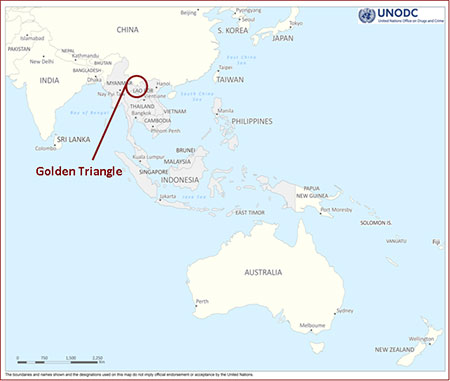
Brisbane (Australia), 19 March 2015 - At the 7th Australasian Drug Strategy Conference , UNODC Regional Representative, Mr. Jeremy Douglas, delivered a keynote address emphasizing the need to build and maintain collaborative partnerships, while strengthening cross-border and inter-agency cooperation in order to respond to growing transnational organized crime in the region.
Addressing over 600 representatives ranging from policy leaders, police, customs, health providers, policy analysts, and academics, Mr. Douglas highlighted the rising threat of Southeast Asia synthetic drug, heroin, and precursor trafficking towards Australia, New Zealand and other countries like Japan. He drew a correlation with instability in the Golden Triangle, cross-border trafficking and the resurgence of opium production in recent years between Myanmar, Lao PDR and Thailand.

"The majority of meth production in East and Southeast Asia fulfils regional demand, but substantial amounts are also being trafficked to other parts of the world, most notably Australia, New Zealand, and Japan" said Mr. Douglas. "Complex international drug trafficking networks are increasingly active in the region due to this lucrative and growing market." This is particularly relevant in the current era of regional integration and reduced border restrictions in Southeast Asia, which have the real potential for increasing cross-border trafficking of drugs and precursors.
The UNODC strengthens Southeast Asia's border management capacity to counter drug and other transnational organized crime through an integrated network of Border Liaison Offices (BLO), staffed with trained front-line officers who are equipped and able to communicate information and real-time intelligence. Through its Global Synthetics Monitoring: Analyses, Reporting and Trends (SMART) programme, UNODC further develops member states' capacity to create evidence-based government responses to regional drug and chemical trafficking.